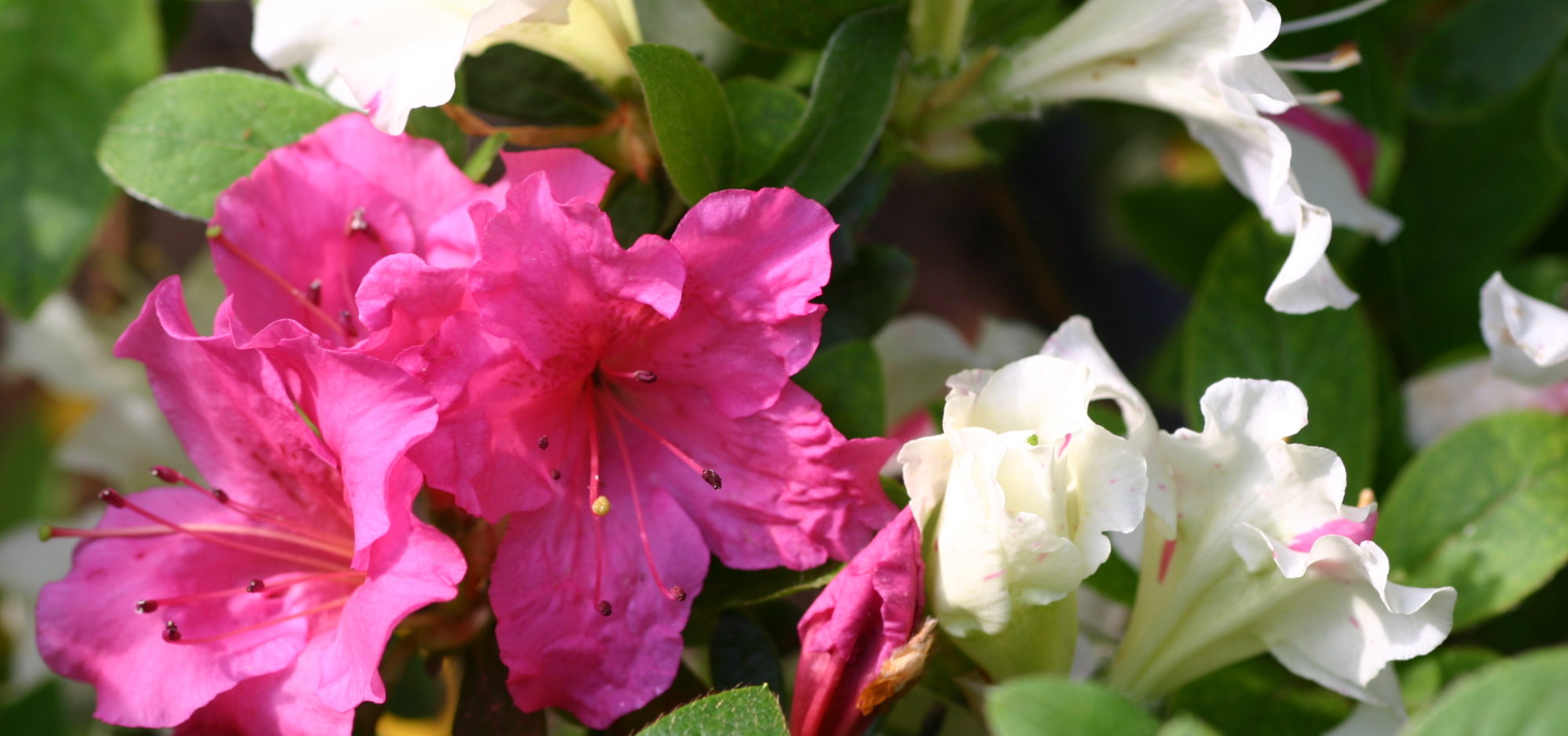All of the evergreen azalea species are native to Japan, and were introduced throughout Asia centuries ago. All are classified in two subseries Obtusum and Tashiroi. Obtusum subseries contains more than 40 species while Tashiroi contains only one.
Obtusum species are arranged into eight groups based on geographical relationships.
The interested reader should consult ‘Azaleas’ by Fred Galle (1985 but still in print) from which this short excerpt is taken. Galle provides much more detail and ties the development of evergreen hybrids to their species components. Many of the species shown below are still rare outside of Asia, but many of these have contributed to one or more important hybrids.
- Kyushu Group
R. kaempferi, R. kiusianum, R. sataense, R. komiyamae - Ryukyu Group
R. Macrosepalum, R. ripense, R.scabrum - Chinese Azaleas
R. simsii - Indica Group
R. indicum, R. Tamurae - Taiwan (Formosa) Group
R. oldhamii, R. rubropilosum, R. nakaharai - Korean Azalea
R. poukhanense - Small Leaf Group
R. serpyllifolium, R. tosaense, R. tschonoskii, R. microphyton - Uncommon or recently introduced species
Of these, two groups have been used extensively to generate a large number of hybrid evergreen azaleas:
KYUSHU GROUP
One or more species from the island of Kyushu are probably the parents of the Kurume Hybrids:
—R. kaempferi, the most common native azalea of Japan, is one of the hardiest of the evergreen azaleas. It has been an important parent in the development of hardy evergreen azaleas.
—R. kiusianum, a dense, twiggy shrub growing up to 2-3 feet. Hybridizes in nature with R. kaempferi and others. As a result, a large number of “wild hybrids” exist in the area and have been collected by Americans and Europeans visiting the area.
INDICA GROUP
This group consists of two late-blooming evergreen species, R. indicum and R. tamurae. For at least 300 years the Japanese have divided azaleas into two groups based on bloom time—late blooming plants are called Satsukis. As a result, hybrids from these two species are called the Satsuki Hybrid Azaleas.

